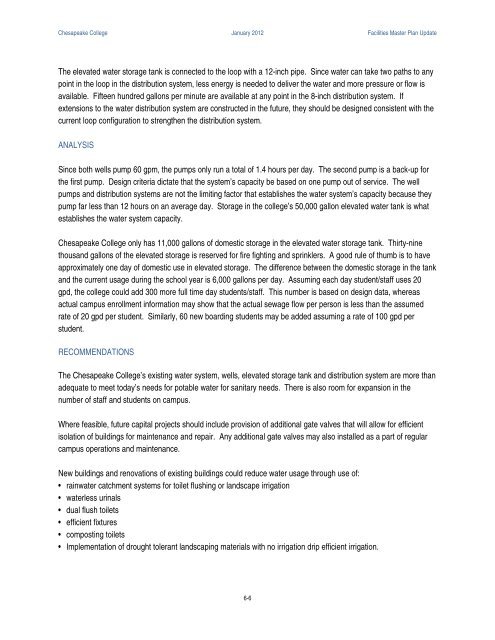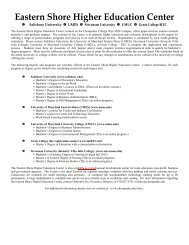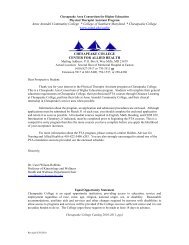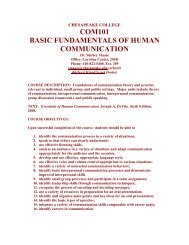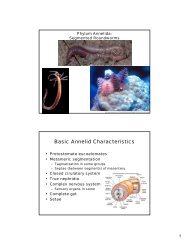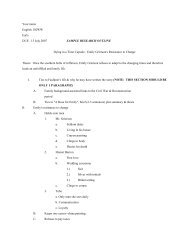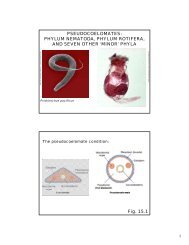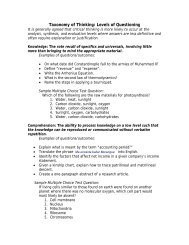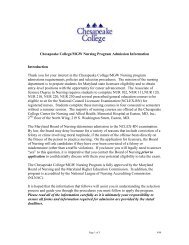Facilities Master Plan - 2012 - Chesapeake College
Facilities Master Plan - 2012 - Chesapeake College
Facilities Master Plan - 2012 - Chesapeake College
You also want an ePaper? Increase the reach of your titles
YUMPU automatically turns print PDFs into web optimized ePapers that Google loves.
<strong>Chesapeake</strong> <strong>College</strong> January <strong>2012</strong> <strong>Facilities</strong> <strong>Master</strong> <strong>Plan</strong> UpdateThe elevated water storage tank is connected to the loop with a 12-inch pipe. Since water can take two paths to anypoint in the loop in the distribution system, less energy is needed to deliver the water and more pressure or flow isavailable. Fifteen hundred gallons per minute are available at any point in the 8-inch distribution system. Ifextensions to the water distribution system are constructed in the future, they should be designed consistent with thecurrent loop configuration to strengthen the distribution system.ANALYSISSince both wells pump 60 gpm, the pumps only run a total of 1.4 hours per day. The second pump is a back-up forthe first pump. Design criteria dictate that the system’s capacity be based on one pump out of service. The wellpumps and distribution systems are not the limiting factor that establishes the water system’s capacity because theypump far less than 12 hours on an average day. Storage in the college’s 50,000 gallon elevated water tank is whatestablishes the water system capacity.<strong>Chesapeake</strong> <strong>College</strong> only has 11,000 gallons of domestic storage in the elevated water storage tank. Thirty-ninethousand gallons of the elevated storage is reserved for fire fighting and sprinklers. A good rule of thumb is to haveapproximately one day of domestic use in elevated storage. The difference between the domestic storage in the tankand the current usage during the school year is 6,000 gallons per day. Assuming each day student/staff uses 20gpd, the college could add 300 more full time day students/staff. This number is based on design data, whereasactual campus enrollment information may show that the actual sewage flow per person is less than the assumedrate of 20 gpd per student. Similarly, 60 new boarding students may be added assuming a rate of 100 gpd perstudent.RECOMMENDATIONSThe <strong>Chesapeake</strong> <strong>College</strong>’s existing water system, wells, elevated storage tank and distribution system are more thanadequate to meet today’s needs for potable water for sanitary needs. There is also room for expansion in thenumber of staff and students on campus.Where feasible, future capital projects should include provision of additional gate valves that will allow for efficientisolation of buildings for maintenance and repair. Any additional gate valves may also installed as a part of regularcampus operations and maintenance.New buildings and renovations of existing buildings could reduce water usage through use of:• rainwater catchment systems for toilet flushing or landscape irrigation• waterless urinals• dual flush toilets• efficient fixtures• composting toilets• Implementation of drought tolerant landscaping materials with no irrigation drip efficient irrigation.6-6


